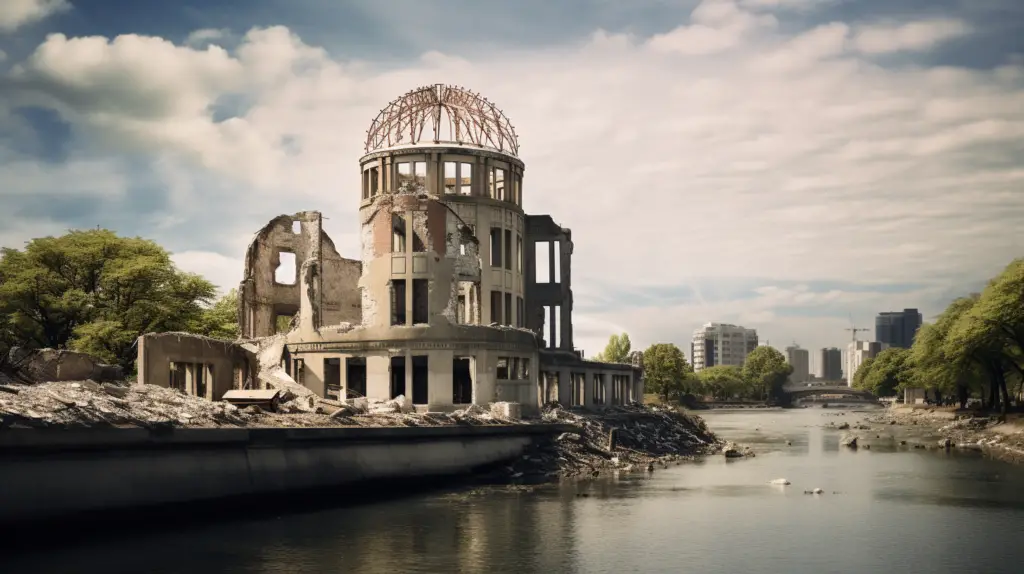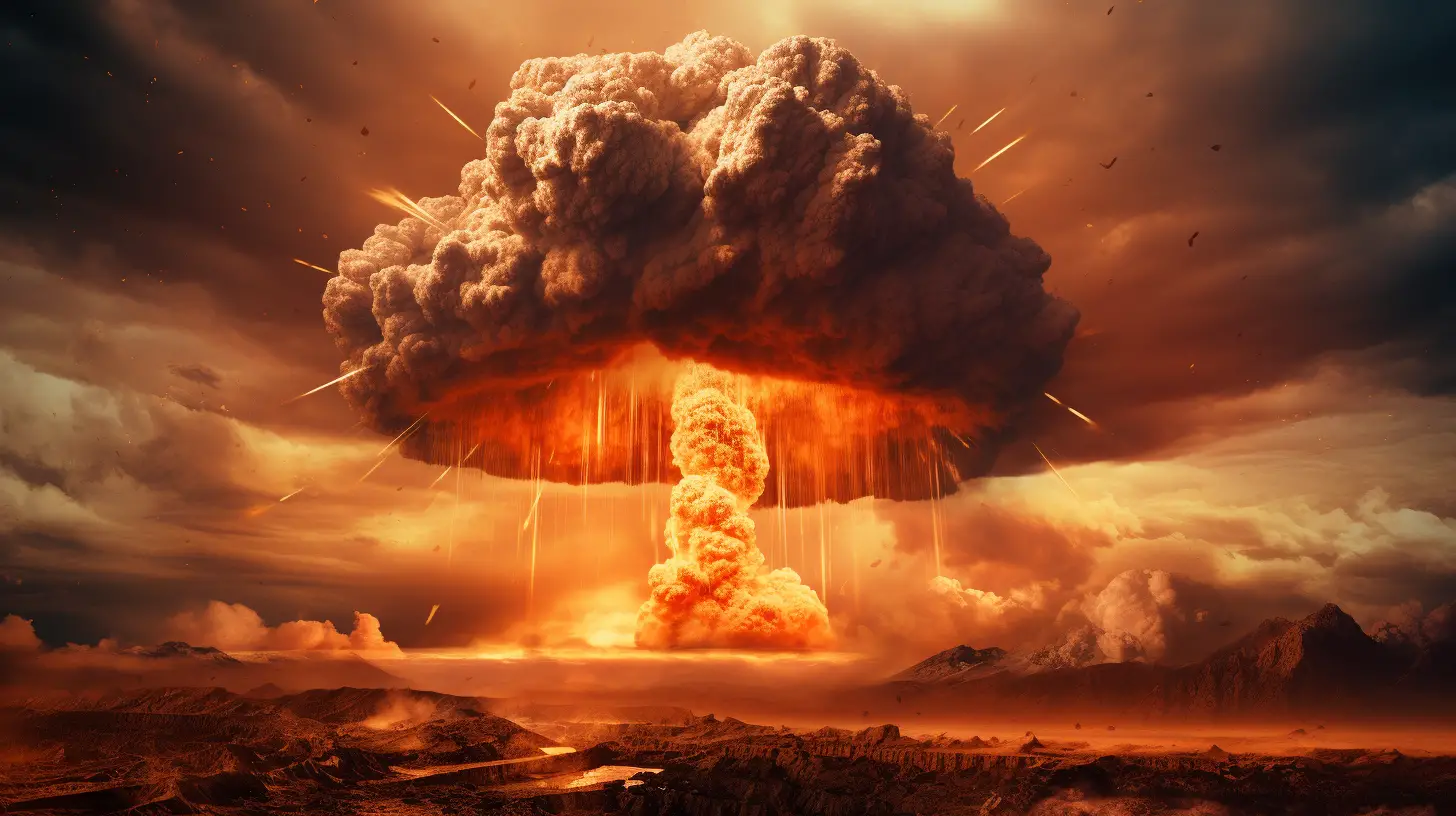During World War II, the United States dropped an atomic bomb onthe Japanese city of Hiroshima, marking the first-ever use of nuclear weapons in warfare. The bomb instantly annihilated everything within a mile radius. It unleashed a blinding flash of light and heat, followed by a destructive shockwave, resulting in the death of many civilians. The bombing, which precipitated Japan’s surrender, effectively brought an end to World War II, but its devastating consequences, including radiation sickness and other long-term health impacts, underscored the horrifyingly destructive potential of nuclear warfare.
In this article I will explain 50 facts you need to know and understand about the atomic bomb dropped on Hiroshima.
- The atomic bomb was dropped on Hiroshima on August 6, 1945.
- It was the first atomic bomb used in war.
- The atomic bomb was known by the code name “Little Boy”.
- The atomic bomb was dropped by the American B-29 bomber, Enola Gay.
- Enola Gay was piloted by Colonel Paul W. Tibbets Jr.
- Tibbets named the plane after his mother, Enola Gay Tibbets.
- The bomb was dropped at 8:15 a.m. Japanese time.
- It exploded about 600 meters above the ground.
- At the moment of detonation, the bomb generated a temperature of about 1 million degrees Celsius.
- The bomb’s flame reached 4 km in diameter.
READ MORE: 50 facts you need to know and understand about the atomic bomb dropped on Nagasaki - The area of complete destruction had a diameter of about 1.6 km.
- About 70,000 people were killed instantly.
- A total number of deaths, direct and indirect, was estimated at 135,000 Japanese.
- The atomic bomb released extremely powerful radiations.
- The radiation caused a disease called “radiation sickness”, which affected the survivors.
- Between 90,000 and 166,000 people died in Hiroshima by the end of 1945.
- Hiroshima was chosen as a target because of its military importance.
- The initial target for Little Boy was the city of Kokura, but it was changed due to unfavorable weather conditions.
- Hiroshima was practically entirely destroyed, with only a few buildings remaining standing.
- One of these buildings, Genbaku Dome, is now a symbol of peace and a UNESCO monument.
READ MORE: 50 Interesting Facts About the Atomic Bomb You Need to Know and Understand - The majority of victims were civilians.
- The bomb caused major damage to infrastructure, with about 69% of the city’s buildings being destroyed.
- The project that developed the atomic bomb was called the Manhattan Project.
- The Manhattan Project started in 1939 and cost about 2 billion dollars, the equivalent of 26 billion dollars today.
- The project involved over 130,000 people.
- Albert Einstein wrote a letter to President Roosevelt, which led to the initiation of the Manhattan Project.
- However, Einstein later regretted his contribution to the creation of the atomic bomb.
- Hiroshima and Nagasaki are the only two cities that have been bombed with nuclear weapons during the war.
- The destruction caused by the atomic bomb played a major role in Japan’s decision to surrender.
- Japan’s surrender marked the end of World War II.
READ MORE: Who was SADAKO SASAKI and her 1000 PAPER CRANES? - Nuclear non-proliferation treaties were created in the aftermath of the use of atomic bombs.
- Each year, on August 6, a moment of remembrance takes place in Hiroshima.
- The city of Hiroshima is now home to the Hiroshima Peace Memorial Park.
- The park includes a museum dedicated to the events of 1945.
- Survivors of the atomic bombs are known in Japan as “hibakusha”.
- Hibakusha and their descendants have suffered from the long-term effects of radiation.
- The bomb had a significant impact on the environment, contaminating soil and water.
- The atomic bomb was 2000 times more powerful than the largest conventional bombs used during the war.
- The atomic bomb gave birth to the “Atomic Age”.
- The creation and use of the atomic bomb sparked a wide ethical debate.
READ MORE: Top 10 Japan Culture Shocks | All You Need To Know - There is currently international consensus on the prohibition of the use of nuclear weapons.
- The atomic bomb changed the course of history and shaped post-war world politics.
- The bomb had a significant impact on scientific and technological research.
- The atomic bomb played a significant role in the onset of the Cold War.
- The atomic bomb led to the development of nuclear power for peaceful purposes, such as nuclear power plants.
- The disaster at Hiroshima influenced literature and art, both in Japan and around the world.
- The city of Hiroshima has been rebuilt into a thriving city, symbolizing resilience and hope.
- Japan is now one of the largest advocates of nuclear disarmament.
- Although over 78 years have passed since the bombing, its effects continue to be felt.
- The bombing of Hiroshima remains a warning sign of the devastation that nuclear weapons can bring.
READ MORE: 25 Interesting Facts About “Hibakusha”: Survivors of the Atomic Bombings
Watch the video presentation:
The atomic bombing of Hiroshima, a seminal event in human history, fundamentally altered the course of warfare, international politics, and our understanding of the power and consequences of nuclear technology. As a dark testament to human ingenuity’s destructive potential, it ushered in the “Nuclear Age”, prompting debates about the ethics, necessity, and control of such weapons that continue to the present day. The horrifying loss of life and lingering effects of radiation underscore the lasting implications of the decision to drop the bomb. As we look back on this tragic event, it serves as a potent reminder of the necessity for global peace and the responsibility that comes with technological progress.


